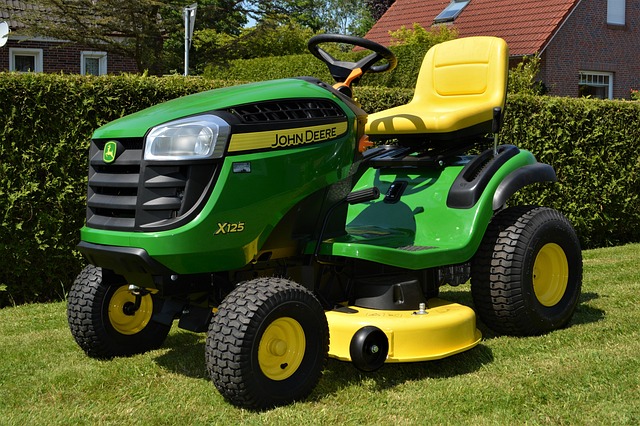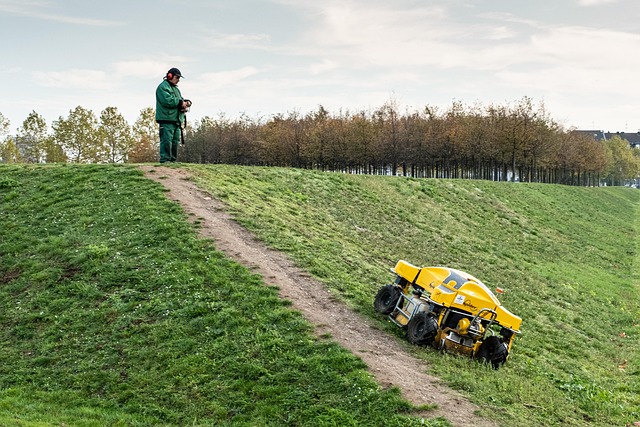Lawn Care and Landscaping: Essentials for Your Green Oasis

Lawn care and strategic landscaping are key to achieving a beautiful garden. Regular mowing, balance…….
Lawn Care and Landscaping: A Comprehensive Overview
Introduction
Lawns are more than just green spaces; they are a canvas for landscaping artistry and a cornerstone of environmental health. This article delves into the multifaceted world of lawn care and landscaping, exploring its historical significance, global impact, economic considerations, technological advancements, and the regulatory framework that shapes it. We will also examine the challenges within this field, present case studies that highlight best practices, and offer a glimpse into the future of lawn care and landscaping. Readers will gain a comprehensive understanding of how this practice influences the environment, enhances property value, and serves as a vital part of urban planning.
Understanding Lawn Care and Landscaping
Lawn care and landscaping encompass a range of practices aimed at maintaining turfgrass areas and designing outdoor spaces for aesthetic, functional, and environmental purposes. The core components include soil management, plant selection, irrigation systems, pest control, and the integration of natural elements into the landscape. Historically, lawns have been symbols of status and beauty, dating back to the formal gardens of ancient civilizations. Today, they are integral to both urban and rural environments, serving as ecosystems, recreational spaces, and buffers against pollution and erosion.
Global Impact and Trends
The influence of lawn care and landscaping is evident worldwide, with trends reflecting local climates, cultural preferences, and ecological concerns. In regions like North America and parts of Europe, well-manicured lawns are commonplace, whereas in other areas, such as Australia and parts of Africa, xeriscaping and drought-resistant landscapes are becoming more prevalent due to water scarcity. Global trends also include the use of native plants to support biodiversity and the adoption of sustainable practices that minimize environmental impact.
Economic Considerations
The lawn care and landscaping industry is a significant economic sector, contributing billions to global economies through employment, investment, and consumer spending. Market dynamics vary by region, with some areas experiencing high demand for residential services and others focusing on commercial or public spaces. The industry’s role in economic systems extends beyond direct financial contributions; it also enhances property values and fosters community well-being.
Technological Advancements
Technology has revolutionized lawn care and landscaping, from advanced mowers that minimize turf damage to GPS-guided irrigation systems that optimize water usage. Innovations in organic pest control and soil health monitoring are also transforming the industry. Looking ahead, autonomous robotic mowers and AI-driven design software promise even greater efficiency and personalization in maintaining and designing landscapes.
Policy and Regulation
Policies and regulations at local, national, and international levels shape how lawn care and landscaping are practiced. These include water conservation laws, pesticide restrictions, and zoning ordinances that dictate landscape design. Compliance with these frameworks is crucial for businesses and homeowners alike, as they influence the sustainability and environmental impact of lawn care practices.
Challenges and Criticisms
Lawn care and landscaping face challenges such as resource management, climate change, and the need for sustainable practices. Criticisms include the perceived overuse of resources, potential harm to ecosystems, and the environmental footprint of certain lawn maintenance activities. Addressing these issues requires a combination of education, policy reform, and innovative solutions that prioritize sustainability and ecological balance.
Case Studies
Several case studies demonstrate the positive impact of well-managed landscapes and sustainable lawn care practices. For instance, the conversion of high-maintenance grass to low-impact alternatives in California has not only saved water but also supported local biodiversity. Another example is the restoration of natural landscapes on college campuses, which serves as an educational tool and a living laboratory for ecological research.
Future Prospects
The future of lawn care and landscaping is poised for innovation and growth, with a focus on sustainability, community engagement, and integration with smart city technologies. Emerging trends include the use of native plants to support wildlife habitats, the adoption of organic and biological pest control methods, and the promotion of lawns as carbon sinks. Strategic considerations for the industry will revolve around adapting to climate change, embracing new technologies, and meeting the evolving needs of diverse communities.
Conclusion
Lawn care and landscaping are more than skin-deep aesthetic practices; they are integral components of environmental stewardship, community building, and economic vitality. Through a thoughtful blend of tradition and innovation, this industry continues to adapt and thrive, offering solutions that enhance the beauty and functionality of outdoor spaces while addressing broader ecological and societal challenges.
FAQ Section
What are the most common sustainable practices in lawn care?
Sustainable practices include using drought-resistant grasses, organic fertilizers, natural pest control methods, and efficient irrigation systems to minimize water usage.
How do technological advancements benefit lawn care and landscaping?
Technological advancements such as GPS-based irrigation systems, autonomous mowers, and soil health monitoring tools help optimize resource use and improve the precision of lawn care practices.
What are some challenges faced by the lawn care and landscaping industry?
Challenges include sustainability concerns, resource management (especially water), adapting to climate change, and addressing public perceptions about the environmental impact of maintaining turfgrass.
How can homeowners contribute to sustainable landscapes?
Homeowners can choose native plants, reduce lawn size, use organic materials for maintenance, and employ xeriscaping principles to create a low-impact landscape that supports local ecosystems.
What role does policy play in shaping the industry?
Policies related to water conservation, pesticide use, and land zoning significantly influence how lawn care and landscaping are practiced and can drive the adoption of sustainable practices across the industry.

Lawn care and strategic landscaping are key to achieving a beautiful garden. Regular mowing, balance…….

To achieve a lush, healthy yard, understand your specific lawn care needs based on climate, soil typ…….

Lawn Care and Landscaping is key to creating a healthy, visually appealing outdoor space. Regular mo…….

Cultivating a lush outdoor space starts with understanding lawn care and landscaping fundamentals, i…….

Maintaining a lush lawn is vital for stunning gardens. Lawn Care and Landscaping involves regular mo…….

Seasonal yard cleanups are essential for Lawn Care and Landscaping, promoting long-term savings and…….

Turf management is a holistic art that transforms lawn care, combining landscaping design with envir…….

TL;DR:Successful lawn care and landscaping (Lawn Care and Landscaping) hinges on understanding your…….

Achieving and maintaining a lush, vibrant lawn requires a multi-faceted approach combining Lawn Care…….

Creating an outdoor oasis requires balancing Lawn Care and Landscaping fundamentals, such as prepari…….